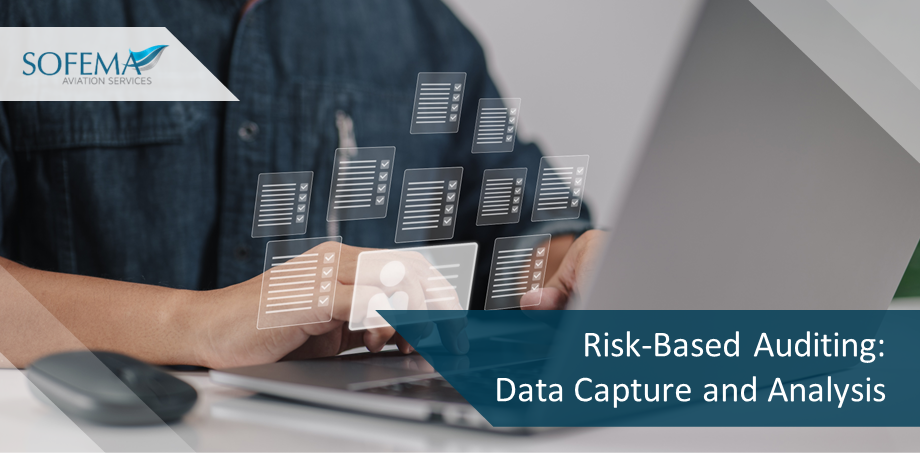Sofema Aviation Services (SAS) www.sassofia.com considers the key aspects of Data Capture and Analysis related to Risk-Based Auditing.
Introduction
Overall, effective data capture and analysis are essential for a successful Risk-Based Audit of an organization. By ensuring that the data is accurate, complete, and relevant, auditors can make informed decisions and provide valuable insights and recommendations to the organization.
The RBA program faces several challenges in its data capture and analysis process. Some of these challenges include:
- Limited access to data: The RBA program relies on data from multiple sources, including national aviation authorities, airlines, and airports. However, some of this data may be limited or unavailable, which can hinder the program’s effectiveness.
- Data quality issues: Incomplete, inaccurate, or inconsistent data can impact the quality of the RBA program’s analysis and results. It is crucial to ensure that the data captured is accurate and up-to-date to enable reliable analysis and decision-making.
- Lack of standardization: Different organizations may use different data collection methods and standards, making it difficult to compare data across organizations or regions. A lack of standardization can lead to inconsistencies in data capture and analysis, making it challenging to identify trends and patterns accurately.
- Resource constraints: Collecting and analyzing data is a resource-intensive process, requiring significant time, money, and expertise. Limited resources can impact the RBA program’s ability to collect and analyze data effectively, which can affect the program’s overall effectiveness.
- Data privacy and security concerns: The RBA program must adhere to strict data privacy and security regulations, which can limit the types of data that can be collected and how the data can be used. Ensuring data privacy and security while still collecting enough data to make informed decisions can be a significant challenge.
When conducting a Risk-Based Audit of an organization, data capture and analysis are critical components of the process. Here are some considerations for each stage:
Optimising Data Capture:
- Identify the relevant data sources, including documents, records, and interviews with staff.
- Develop a data collection plan that outlines what data will be collected, when it will be collected, and who will collect it.
- Use standardized data collection tools and templates to ensure consistency and accuracy of data.
- Ensure data privacy and security by following appropriate protocols for handling sensitive information.
Data Analysis:
- Develop a data analysis plan that outlines the objectives of the analysis, the methods that will be used, and the expected outcomes.
- Use appropriate data analysis techniques, such as statistical analysis, trend analysis, or root cause analysis, to identify patterns and trends in the data.
- Ensure that the analysis is relevant to the audit objectives and is presented in a clear and concise manner.
- Validate the results of the analysis by comparing them with the original data sources and seeking input from subject matter experts.
Next Steps
Follow this link to our Library to find & Download related documents for Free.
Sofema Aviation Services (www.sassofia.com) and Sofema Online (www.sofemaonline.com) provide Classroom, Webinar & Online Training of EASA Regulatory Compliant and Vocational Training Courses, for questions please email team@sassofia.com
Tags:
aviation, Aviation Regulatory, Compliance, Data Analysis, Data Capture, EASA, EASA regulatory compliant, RBA program, Risk, Risk-Based Audit, SAS blogs, SAS training, Sofema Aviation Services, SOL Training




